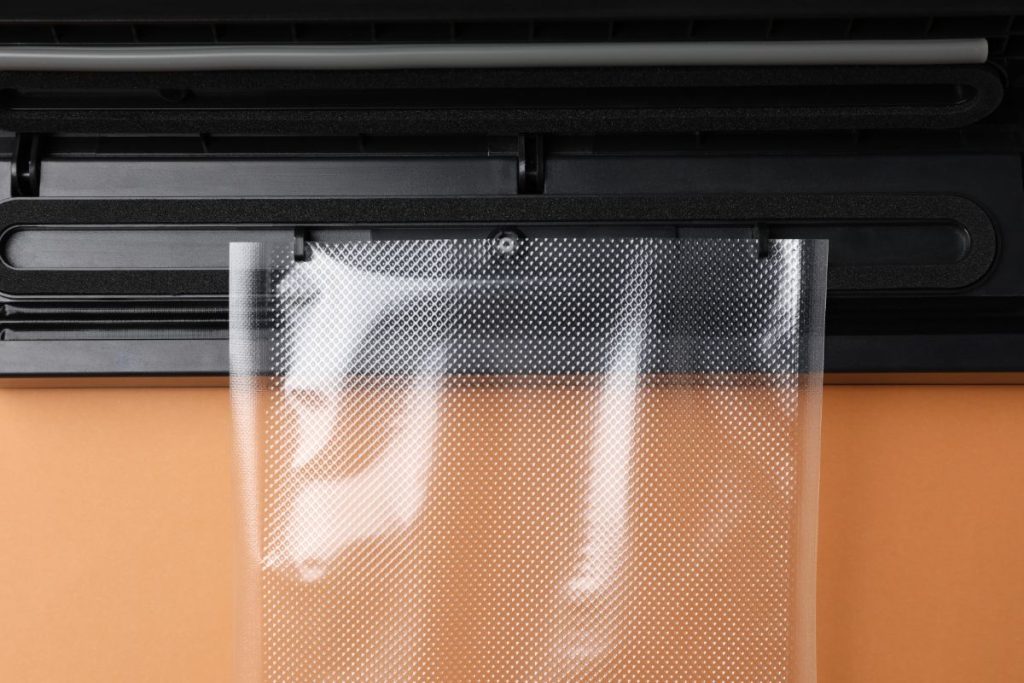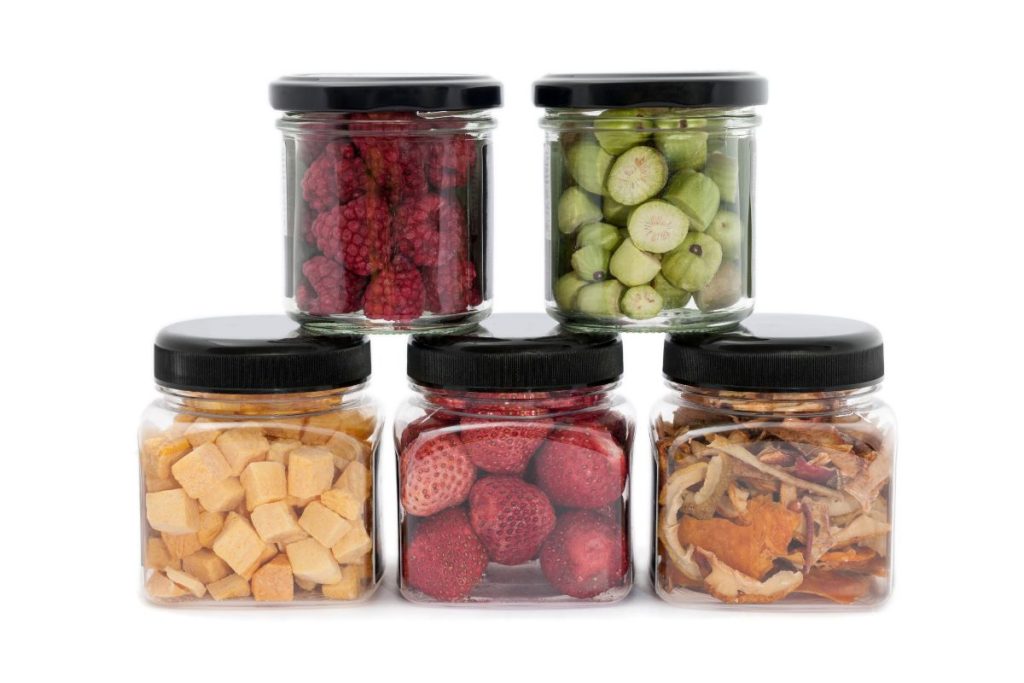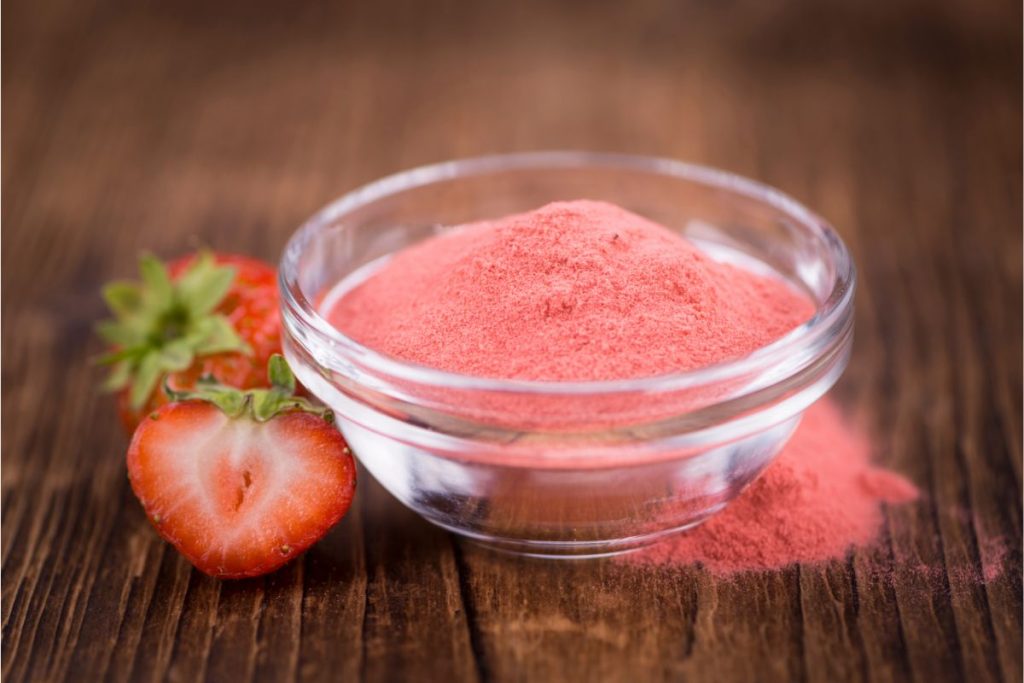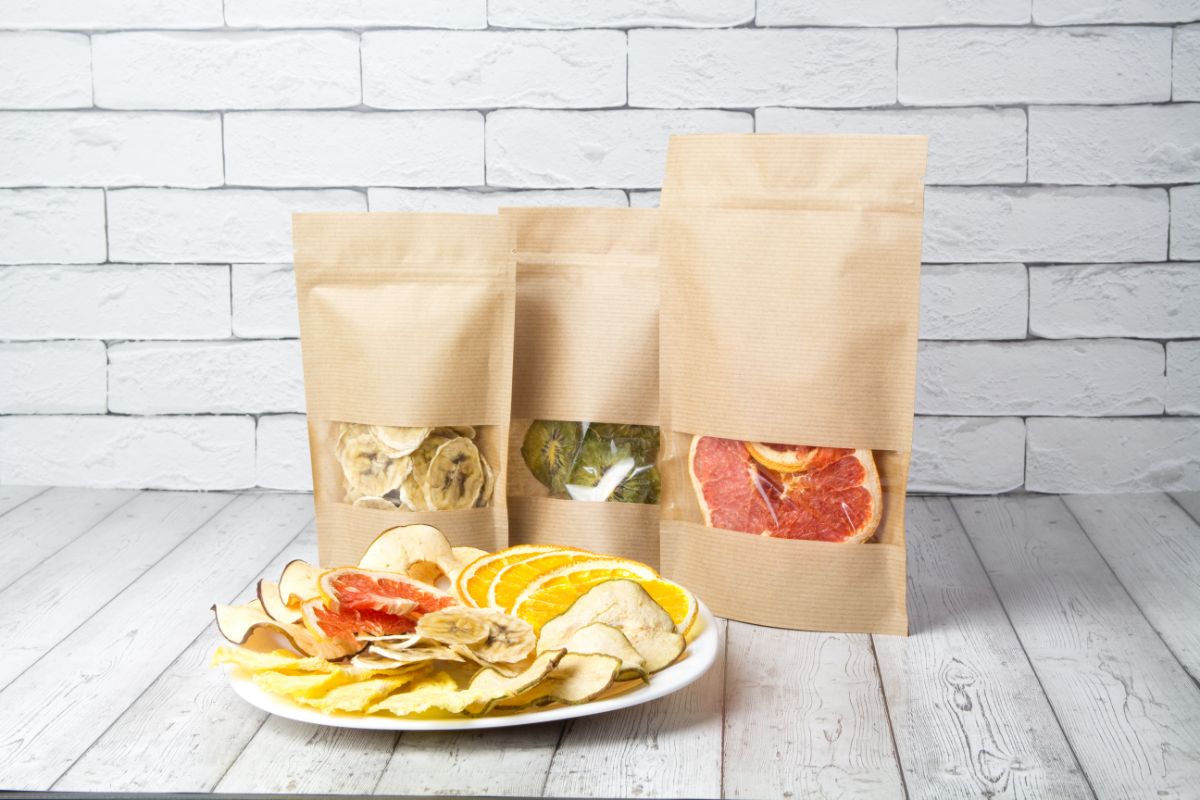The best dry fruit containers are airtight containers such as glass jars, vacuum seal bags, and Mylar bags. Use multi-compartment wooden dry fruit boxes or snack storage boxes with lids for storing dried fruit that will be consumed within a week.
Table of Contents
What Container is Best For Storing Dry Fruits?
The best storage containers for dry fruits are vacuum-sealed bags. They can keep your dried fruit for up to 30 years when you add an oxygen absorber inside.
Vacuum-sealing removes most of the air and moisture in the bags, making it hard for bacteria and mold to thrive. The oxygen absorber removes the little oxygen that remains.

Benefits of Different Fruit Storage Containers
There are many excellent food storage container options, including dried fruit boxes, serving bowls, and wooden trays with lids.
The best one to use depends on how long dried fruit will be stored and if you wish to store the fruit at room temperature, in a freezer, or in a refrigerator.
1. Freezer-safe Mylar Bags
Freezer-safe Mylar bags are excellent for storing dried fruit in the freezer. They are dark and thick, so your fruit won’t be exposed to light. The thickness ensures moisture interference is minimal.
2. Glass Jars
Glass jars, including Mason jars, are excellent because they allow you to monitor the condition of your dehydrated fruits.
They are clear, making it easy to observe stored fruits for condensation or molding. These containers are most often used for room-temperature storage.
3. Plastic Freezer Bags & Lidded Containers
Plastic freezer bags and lidded plastic containers are ideal for storing dried fruit in the freezer. Always ensure the oxygen and moisture in them are released before sealing them.
4. Dry Fruit Storage Boxes
Planning to eat dried fruit within a few days or serving guests? Dry fruit trays and dried food storage boxes with grids are excellent for sorting and storing dried fruit.
Display snack trays or dried fruit plates on serving platters in your kitchen or living room. Choose compartmentalized containers with transparent lids or multipurpose wooden tray sets to separate different types of fruit.

What is the Best Way to Store Dried Fruit?
The best way to store dried fruit is to keep it in airtight containers in a cool, well-ventilated, dark place.
Safe Storage Practices
- Label dried fruit containers with the contents and date
- Only store dried fruit in clean, dry containers
- Store dried fruit away from direct sunlight
- Store fruit in smaller amounts to avoid oxygen exposure
- Use food-grade storage containers and avoid storing sulfured fruit in metal containers
Preventing Oxidation and Molding
Add an oxygen absorber or silica desiccant in storage containers for improved shelf life.
Oxygen absorbers eliminate oxygen to prevent oxidation, while desiccants eliminate moisture to avoid molding. Never add both in the same package, as they counteract one another.
Dried Fruit Storage Environment
The ideal storage temperature for most dehydrated food is 60°F, with an acceptable range of 50°F-70°F. Humidity levels should always be as low as possible, preferably 50-70% relative humidity.
Should Dried Fruit Be Stored in an Airtight Container?
Yes, dried fruit should be stored in an airtight container or canister. One of the worst enemies of dehydrated food is oxygen, which causes food to oxidize and go bad.
Airtight storage containers help to maintain the freshness of dried fruits longer than when you leave them in ordinary boxes or bags.

Is it Okay to Keep Dry Fruits in the Fridge or Freezer?
It’s okay to keep most dry fruits in the fridge or freezer. The refrigerator minimizes oxidation and is better for short-term dry food storage.
The freezer is an excellent long-term dried fruit storage solution for preventing spoilage caused by oxidation.
How to Store Dry Fruits in a Freezer
To store freshly dried fruit in the freezer, flash-freeze the fruits first:
- Place the dried fruits on a baking sheet lined with parchment paper. Leave enough spaces between the fruits.
- Place the loaded, uncovered baking sheet in the freezer for 1-2 hours.
- Put the semi-frozen fruits in an airtight container and immediately place them back in the freezer. Always aim for a freezer temperature of 0°F for dried foods.
Is it Possible to Store Dry Fruits in a Pantry?
Yes, it’s possible to store dry fruits at room temperature in a pantry or home kitchen storage space.
It works exceptionally well for powdered dry fruits since powders are more prone to spoilage when they absorb moisture.

How Long Can Dried Fruits Be Stored?
Dried fruits can be stored safely for six months to 15 years. The shelf life of dried fruits depends on the storage method, the storage environment, and the moisture content of the dried fruit.
Most dried fruits should be consumed within 6 months to a year for the best quality.
| Type of Fruit | Shelf Life |
| Avocado | 1 year |
| Cranberries | 2 years |
| Figs | 1 year |
| Grapefruit | 1 year |
| Kiwi | 1 year |
| Pineapple | 1 year |
| Prunes | 1 year |
Should Dried Fruits Be Stored with Oxygen Absorbers or Desiccants?
You can store dried fruits with oxygen absorbers or desiccants. Oxygen absorbers are ideal for foods with less than 10% moisture content, while desiccants are ideal for keeping fruits moisture-free, especially in high-humidity areas.
Avoid using both desiccants and oxygen absorbers in the same dry fruit container.

